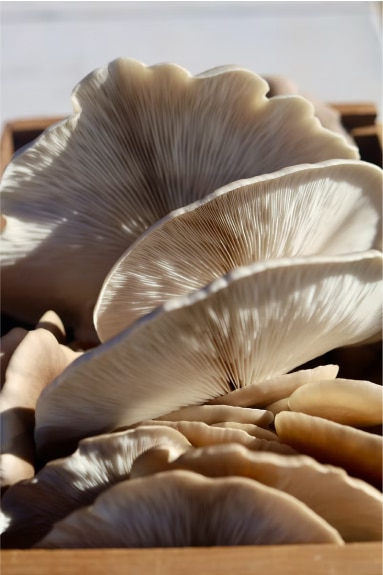
Mushrooms and mycotherapy
The term “mycology”, which is the part of botany that studies fungi, comes from the Greek word “mukès”, mushroom. The vegetative apparatus of a mushroom is generally filamentous, partitioned or not (hypha or siphon: cell that forms the flesh of a mushroom), consisting of the mycelium (filamentous part of mushrooms, usually underground, from the germination of spores which are the reproductive cells of fungi).
The aerial part (called carpophore) is the fruiting body of the fungus which is above the ground and which produces the spores. It is most frequently presented in the form of a parasol: we can distinguish the foot (also called stem, peduncle or stipe) which may have a bulge at the base (bulb) and sometimes surrounded by a volva (remnant of the general veil that forms a membranous bag at the foot of some mushrooms).
The cap of the mushroom (also called pileus), either dome-shaped or funnel-shaped, and lined underneath with vertical lamellae (sheets or hymenium), or narrow tubes welded together, or prickles.
Specialists divide fungi into 3 large families: macromycetes (meaning “visible to the naked eye”), molds (which can be identified by their tenuous filaments) and yeasts (which are single-celled). These live in 3 different ways: they parasitize on trees, plants or crops, they saprophyte on animal or plant debris and in mycorrhises (association of the root of a plant and the mycelium, vegetative part of the fungus made of fine filaments). Thus, for example, the truffle is a mycorrhizal fungus.
